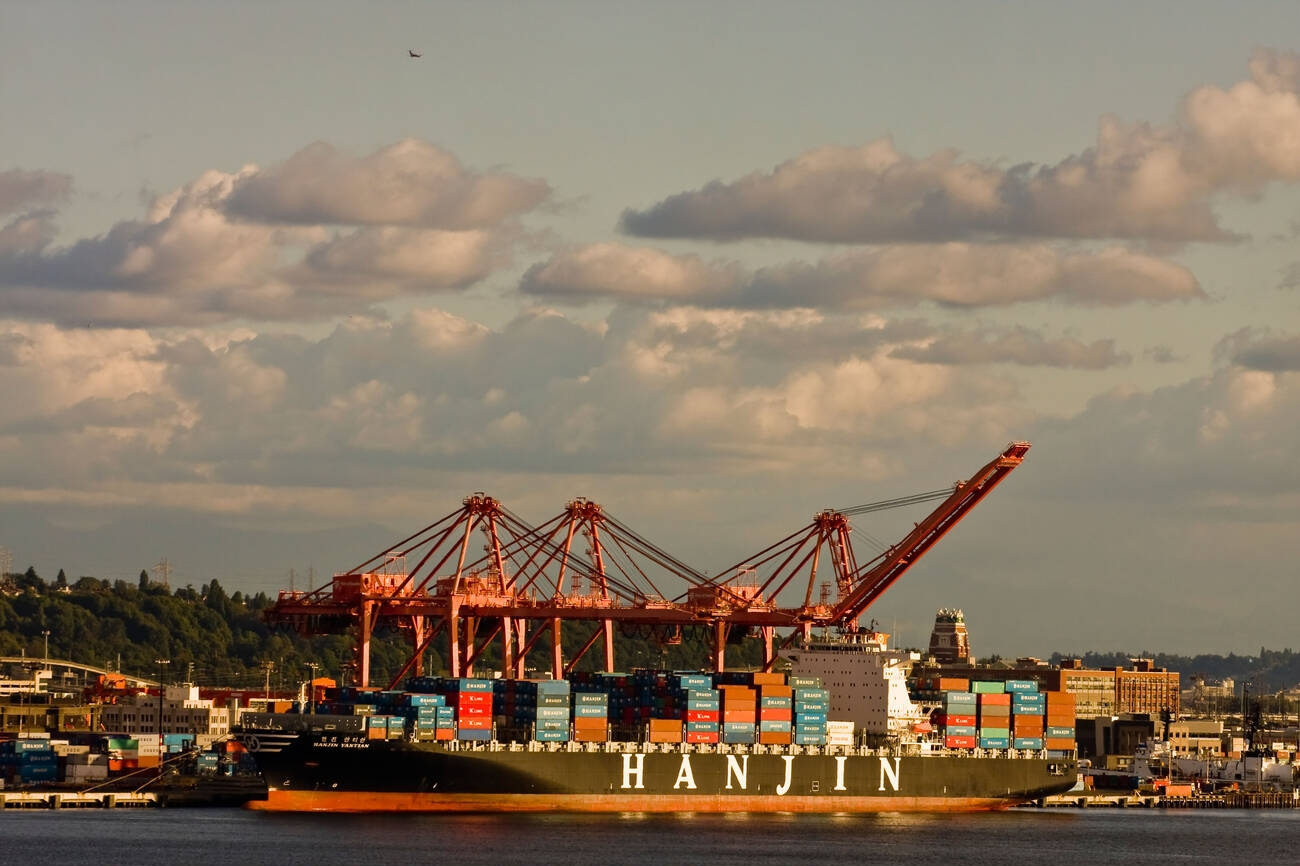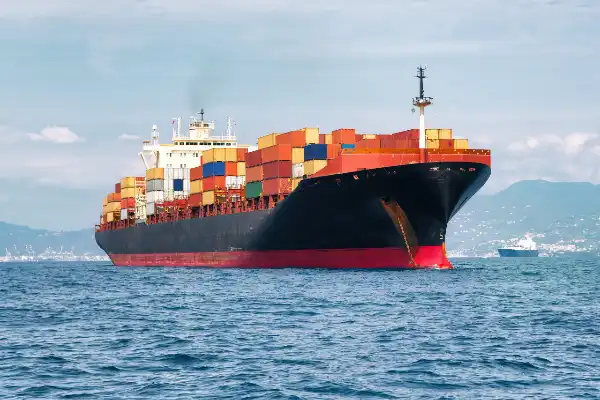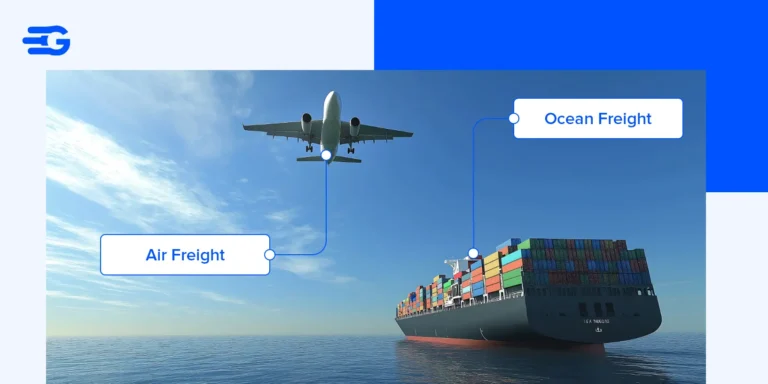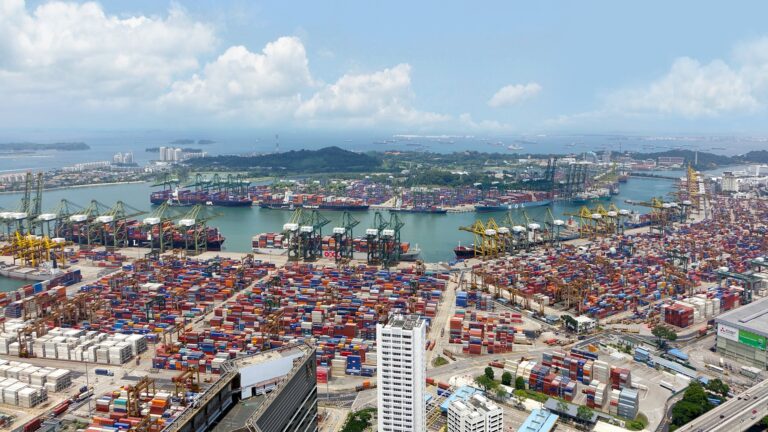The Ultimate Guide to Freight Shipping – Everything You Need to Know
Table of Contents
Freight shipping is the lifeline of global trade. Whether you’re a business owner, a logistics manager, or just someone curious about how goods move across the world, understanding freight shipping is essential. It impacts everything from cost-efficiency to supply chain reliability.
This guide will break down logistics shipping types, cost factors, benefits, and automation trends to help you make informed decisions and optimize your shipping strategy.
What Is Freight Shipping and Why Is It Critical for Businesses?
Freight shipping is the transportation of bulk goods using trucks, ships, trains, and airplanes. Unlike parcel shipping, which handles small packages, freight involves larger shipments that require specialized logistics, cost optimization, and route planning. It is essential for businesses managing high-volume inventory, raw materials, or heavy goods that cannot be moved through standard parcel services.
How Freight Shipping Drives Global Supply Chains
Freight shipping is the foundation of global commerce. Manufacturers depend on it for sourcing raw materials, wholesalers for bulk distribution, and retailers for maintaining stock levels. Without efficient freight logistics, production lines stall, inventory shortages occur, and businesses face costly delays.
Freight shipping also directly impacts operational costs, delivery timelines, and supply chain reliability. Businesses that optimize their freight operations can reduce transportation expenses, improve order fulfillment rates, and minimize disruptions. Strategic freight management, including carrier selection, route optimization, and technology adoption, can give companies a significant competitive advantage.
Freight vs. Parcel Shipping: Key Differences
Not sure whether to use freight or parcel shipping? The choice depends on weight, volume, handling, and cost. Here’s how they compare:
| Feature | Parcel Shipping | Freight Shipping |
| Weight Limit | Under 150 lbs | Over 150 lbs |
| Carriers | FedEx, UPS, USPS, DHL | LTL, FTL, intermodal carriers |
| Shipping Mode | Individual packages | Bulk shipments |
| Cost Efficiency | Higher per unit cost | Lower per unit cost for bulk shipments |
| Handling | Small package sorting and delivery | Palletized or containerized transport |
| Speed | Faster for small shipments | Slower for large shipments, but cost-saving |
| Tracking | Standard tracking available | Advanced tracking with real-time visibility |
| Ideal For | Small businesses, e-commerce, individual consumers | Large businesses, manufacturers, wholesalers |
Freight Shipping Modes Explained
Understanding cargo transportation starts with knowing the different transportation modes. Each has its advantages depending on shipment size, cost, and speed requirements.
Less than Truckload (LTL): Best for Small Shipments
LTL shipping is ideal for shipments too big for parcel delivery but not large enough to fill an entire truck. It’s cost-effective because multiple businesses share the same truck, splitting transportation costs. However, shipments may take longer due to multiple stops along the route.
Full Truckload (FTL): Cost-Effective Bulk Transport
FTL shipping is best for large, high-priority shipments that need to go directly from the sender to the receiver. Since an entire truck is dedicated to one shipment, transit times are faster, and there’s less handling, reducing the risk of damage. It’s the most cost-efficient option when shipping in bulk.
Partial Truckload: A Middle Ground Between LTL and FTL
Partial truckload is a hybrid of LTL and FTL. It allows businesses to book a portion of a truck instead of sharing space with multiple shipments like in LTL. It’s a great choice when you need faster transit times than LTL but don’t have enough cargo to fill an entire truck.
International Freight: Choosing Between Air and Sea
Shipping internationally? The choice between air and sea freight depends on cost, urgency, and cargo type:
- Air Freight: The fastest but most expensive option. Best for urgent, high-value shipments like electronics and pharmaceuticals.
- Sea Freight: The cheapest way to move goods globally. Ideal for heavy, bulk shipments such as raw materials and manufactured goods, but takes weeks instead of days.
Rail and Intermodal Freight: Efficient and Eco-Friendly
Rail freight is a cost-efficient and environmentally friendly choice for long-distance shipping. It’s best for heavy loads that don’t require rapid delivery.
Intermodal shipping, which combines rail and trucking, is becoming popular as it balances cost savings with flexibility. It’s especially useful for cross-country and international shipping where different transportation methods are needed for efficiency.
Benefits of Freight Shipping for Businesses
Freight shipping is a critical component of supply chain management, enabling businesses to move goods efficiently while controlling costs. By implementing strategic shipping practices, companies can improve their bottom line and streamline logistics operations.
Cost Saving Strategies for Small and Large Businesses
- Freight consolidation: Combining smaller shipments into one larger load minimizes costs per unit.
- Negotiating long-term contracts: Securing volume-based pricing with carriers leads to lower shipping expenses.
- Leveraging freight management software: AI-driven tools optimize routes, reduce fuel consumption, and eliminate inefficiencies.
- Multi-carrier shipping strategies: Diversifying carriers prevents reliance on a single provider, keeping rates competitive.
Freight Shipping and Sustainability Eco Friendly Solutions
Sustainability is becoming a priority in freight logistics, with businesses adopting greener shipping methods:
- Electric and alternative fuel trucks: Reduce carbon emissions and long-term fuel costs.
- Optimized route planning: AI-powered route selection minimizes fuel waste and unnecessary mileage.
- Carbon offset programs: Businesses are investing in carbon credits to neutralize their shipping footprint.
Why Businesses Are Switching to Digital Freight Solutions
Digital freight solutions enhance efficiency, reduce costs, and improve transparency in logistics:
- Automation: Reduces manual paperwork and streamlines booking, invoicing, and tracking.
- AI-driven insights: Predictive analytics help businesses anticipate demand, avoid delays, and optimize costs.
- Real-time tracking: Improves supply chain visibility, reduces shipment errors, and enhances customer satisfaction.
Businesses that embrace digital freight solutions gain a competitive edge by lowering costs, improving reliability, and ensuring sustainable logistics operations.
How Freight Shipping Rates Are Calculated
Freight shipping costs depend on multiple factors, and understanding these can help businesses optimize expenses.
Key Cost Factors: Weight, Distance, and Speed
- Weight & Size: Heavier and bulkier shipments cost more due to increased handling and space requirements.
- Distance: Longer shipping routes result in higher fuel and operational costs.
- Speed: Expedited shipping comes at a premium, while standard transit options are more cost-effective.
Freight Classifications and How They Impact Cost
Freight is classified based on density, handling difficulty, liability, and storage needs. Lower classifications generally have lower shipping rates. Understanding classification can help businesses avoid unnecessary charges by optimizing packaging and load configurations.
Hidden Fees and How to Avoid Them
- Fuel surcharges: Monitor fuel price trends and plan shipments accordingly.
- Liftgate fees: Choose carriers that offer inclusive liftgate services to avoid extra charges.
- Detention fees: Reduce delays during loading and unloading to prevent costly wait-time fees.
By managing these factors effectively, businesses can control freight costs while ensuring smooth and reliable shipping operations.
How to Ship Freight: A Step-by-Step Guide
Shipping freight efficiently requires careful planning, the right carrier, secure packaging, and real-time tracking. Follow these steps to ensure smooth, cost-effective freight transportation.
1. Choosing the Right Freight Carrier
Selecting the right carrier is crucial for cost efficiency, reliability, and shipment security. Consider:
- Service coverage: Ensure the carrier operates in your required regions.
- Pricing and contracts: Compare rates for LTL, FTL, and intermodal shipments. Long-term contracts may offer better pricing.
- Tracking and visibility: Choose carriers with real-time tracking and digital freight platforms.
- Reputation and reliability: Look at customer reviews, on-time delivery rates, and claims history.
2. Packaging Freight for Safe Transit
Proper packaging reduces damage risks and ensures compliance with carrier requirements:
- Use pallets or crates: Palletized shipments are easier to handle and less prone to damage.
- Secure shipments: Wrap pallets tightly with shrink wrap and use straps if necessary.
- Distribute weight evenly: Prevent shifting during transit by stacking goods properly.
- Label shipments clearly: Include destination, handling instructions, and tracking barcodes for tracking.
3. Tracking and Managing Freight Shipments
Real-time shipment visibility helps prevent delays and manage disruptions:
- Leverage digital tracking tools: Use freight management platforms to monitor shipments and receive automated alerts.
- Set up proactive notifications: Get updates on estimated arrival times, route changes, or delays.
- Maintain shipment records: Keep digital logs of all freight movements to analyze performance and improve future shipping decisions.
Common Freight Shipping Challenges and How to Overcome Them
Freight shipping comes with risks like delays, damages, and regulatory hurdles. Proactively addressing these issues helps businesses maintain smooth operations and avoid costly disruptions.
Delays, Damages, and Disruptions & Solutions That Work
- Use predictive analytics to anticipate potential delays and adjust schedules.
- Insure shipments to protect against damage and financial loss.
- Diversify shipping modes to create backup options in case of disruptions.
Customs and International Freight Regulations Simplified
- Ensure accurate documentation to prevent customs delays.
- Understand duty and tariff requirements to avoid unexpected costs.
- Partner with freight forwarders for seamless customs clearance and compliance.
Technology’s Role in Solving Freight Problems
- AI-powered tracking provides real-time visibility into shipments.
- IoT sensors monitor cargo conditions and prevent losses.
- Automated route optimization helps reduce transit times and fuel costs.
The Future of Logistics with Freight Shipping Automation
Automation is reshaping freight shipping, making logistics faster, smarter, and more cost-efficient. Businesses that embrace digital solutions gain better control over shipments, reduce errors, and improve overall supply chain performance.
How Automation is Revolutionizing Freight Management
- AI-driven platforms eliminate manual paperwork, reducing processing time and human errors.
- Automated booking and invoicing streamline operations and enhance efficiency.
- Real-time data analytics provide better decision-making for cost and route optimization.
AI and Predictive Analytics for Cost Optimization
- Predictive analytics help businesses adjust shipping schedules to avoid peak pricing and delays.
- AI-powered demand forecasting optimizes inventory levels and shipment planning.
- Route optimization tools reduce fuel costs and improve delivery timelines.
Choosing the Best Freight Management Software
Selecting the right freight management software is crucial for optimizing operations, reducing costs, and improving shipping efficiency. Focus on key features that directly enhance logistics performance.
Must-Have Features in Freight Management Software
- End-to-End Visibility: Real-time shipment tracking with automated updates helps prevent delays and enhances supply chain transparency.
- AI-Powered Route Optimization: Identifies the most efficient routes, reducing transit times and fuel costs.
- Automated Billing and Invoicing: Eliminates manual errors, accelerates payment processing, and ensures accurate financial records.
- Freight Rate Comparison: Provides instant access to multiple carrier quotes, helping businesses secure the best shipping rates.
- Compliance and Documentation Management: Automates customs paperwork to prevent delays and ensure regulatory compliance.
Choosing software with these features ensures better control over freight operations and maximizes cost savings.
How to Choose the Right Software for Your Business
- Scalability: Ensure the software can handle growing shipment volumes without performance issues. It should support multi-location operations and international shipping if required.
- Integration: The system must connect seamlessly with your ERP, TMS, or WMS to automate workflows and eliminate manual data entry. API compatibility is crucial for smooth integration.
- User-Friendliness: A clean, intuitive interface minimizes training time and reduces errors. Look for customizable dashboards, real-time alerts, and easy navigation.
- Customer Support: Reliable support is essential. Check for 24/7 availability, multiple support channels (phone, email, live chat), and a dedicated account manager.
- Potential Limitations: Consider factors like high implementation costs, limited customization in standard solutions, possible integration challenges, and required software updates.
The right software helps businesses streamline freight operations, reduce costs, and improve overall supply chain efficiency.
Wrapping Up
Freight shipping is the backbone of global trade. By understanding the different modes, cost factors, and digital solutions available, businesses can optimize their logistics strategy and cut costs. Investing in freight automation and predictive analytics will shape the future of shipping, making it more efficient and cost-effective.






